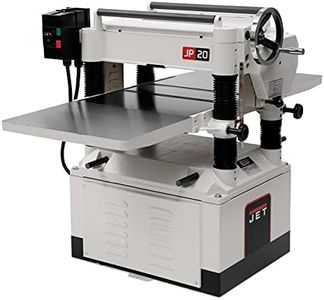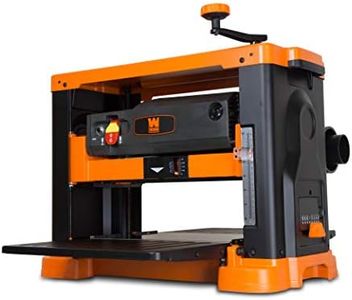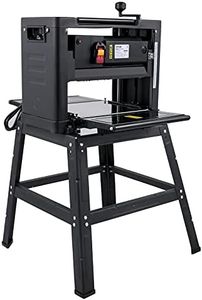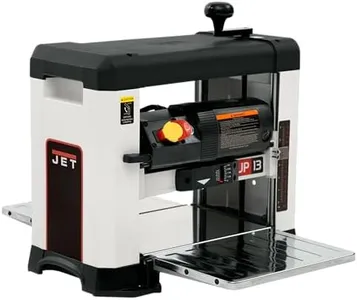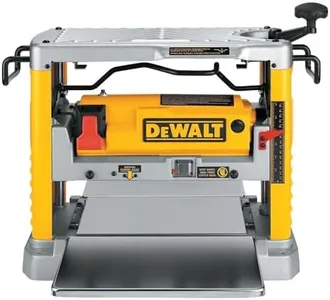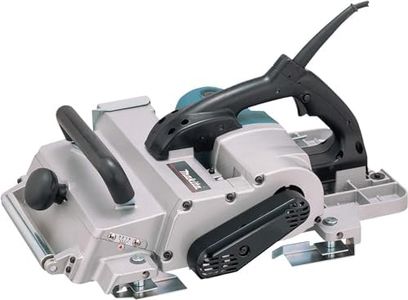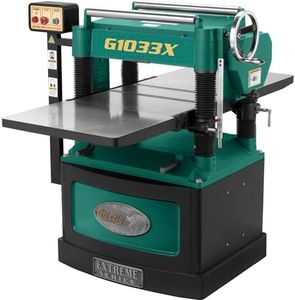10 Best Heavy Duty Wood Planers 2025 in the United States
Our technology thoroughly searches through the online shopping world, reviewing hundreds of sites. We then process and analyze this information, updating in real-time to bring you the latest top-rated products. This way, you always get the best and most current options available.

Our Top Picks
Winner
JET 20-Inch Planer, Helical Cutterhead, 5 HP, 230V 1Ph (Model JWP-208HH)
Most important from
52 reviews
The JET 20-Inch Planer (Model JWP-208HH) is a powerful machine designed for heavy-duty woodworking tasks. Its 5 HP induction motor with a V-belt transmission provides robust performance, making it suitable for large-scale projects. The planer features a 20-inch cutting width and a cutting depth of up to 0.09 inches, allowing for substantial material removal in a single pass.
The helical cutterhead with multiple blades ensures smoother finishes and quieter operation compared to traditional straight knife cutterheads. The two-speed gearbox with automatic chain tensioner offers flexibility with feed rates of 24 and 31 feet per minute, catering to different material types and desired finish quality. Adjustments are made easy with a large handwheel and an increment height scale for precise control over the cut depth.
The build quality is excellent, featuring a one-piece welded steel base and cast iron infeed/outfeed tables, providing stability and durability. For dust management, the included dust hood connects to an extraction system, keeping the workspace cleaner. The machine is quite heavy at 753 pounds, which may pose challenges for mobility and setup. Additionally, its large footprint requires ample shop space. With a 5-year warranty (reduced to 2 years for commercial use), it’s designed for reliability. This planer is well-suited for professional woodworkers and serious hobbyists needing consistent, high-quality results on a variety of hardwoods and softwoods.
Most important from
52 reviews
Buying Guide for the Best Heavy Duty Wood Planers
When choosing a heavy-duty wood planer, it's important to consider several key specifications to ensure you get the best fit for your needs. A wood planer is a tool used to create a smooth, flat surface on a piece of wood, and heavy-duty models are designed to handle larger, tougher jobs. Understanding the different specs and how they relate to your specific needs will help you make an informed decision.FAQ
Most Popular Categories Right Now


